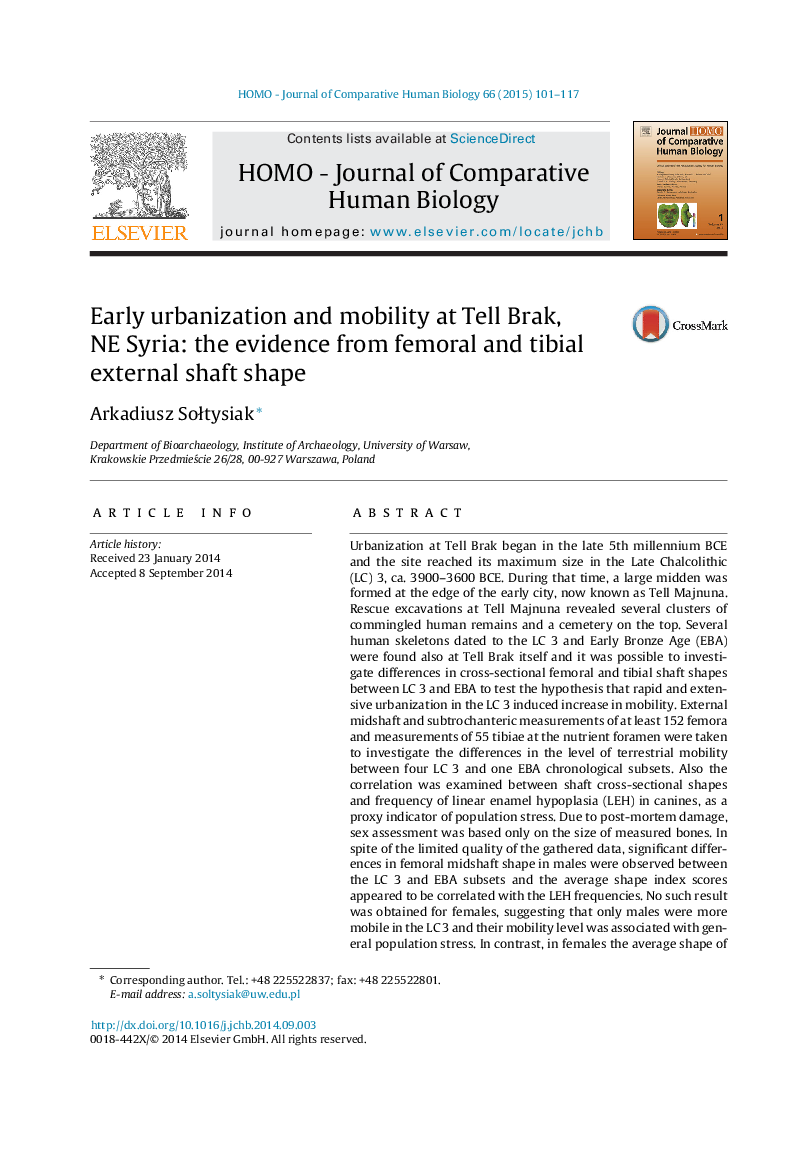| کد مقاله | کد نشریه | سال انتشار | مقاله انگلیسی | نسخه تمام متن |
|---|---|---|---|---|
| 100242 | 160975 | 2015 | 17 صفحه PDF | دانلود رایگان |

Urbanization at Tell Brak began in the late 5th millennium BCE and the site reached its maximum size in the Late Chalcolithic (LC) 3, ca. 3900–3600 BCE. During that time, a large midden was formed at the edge of the early city, now known as Tell Majnuna. Rescue excavations at Tell Majnuna revealed several clusters of commingled human remains and a cemetery on the top. Several human skeletons dated to the LC 3 and Early Bronze Age (EBA) were found also at Tell Brak itself and it was possible to investigate differences in cross-sectional femoral and tibial shaft shapes between LC 3 and EBA to test the hypothesis that rapid and extensive urbanization in the LC 3 induced increase in mobility. External midshaft and subtrochanteric measurements of at least 152 femora and measurements of 55 tibiae at the nutrient foramen were taken to investigate the differences in the level of terrestrial mobility between four LC 3 and one EBA chronological subsets. Also the correlation was examined between shaft cross-sectional shapes and frequency of linear enamel hypoplasia (LEH) in canines, as a proxy indicator of population stress. Due to post-mortem damage, sex assessment was based only on the size of measured bones. In spite of the limited quality of the gathered data, significant differences in femoral midshaft shape in males were observed between the LC 3 and EBA subsets and the average shape index scores appeared to be correlated with the LEH frequencies. No such result was obtained for females, suggesting that only males were more mobile in the LC 3 and their mobility level was associated with general population stress. In contrast, in females the average shape of subtrochanteric femoral cross-section was more variable between temporal subsets. The patterns of temporal differences in tibial cross-section at the nutrient foramen were not conclusive due to the small sample size. Obtained results suggest that males in the LC 3, the period of rapid urbanization, were more mobile than in the EBA, when the population size was considerably smaller. This mobility may have been related to need of searching for alternative resources for the overpopulated early city.
Journal: HOMO - Journal of Comparative Human Biology - Volume 66, Issue 2, April 2015, Pages 101–117